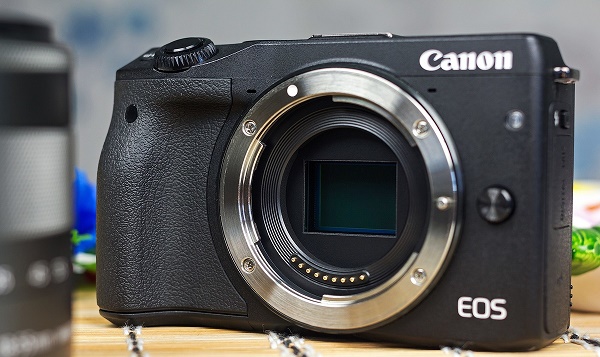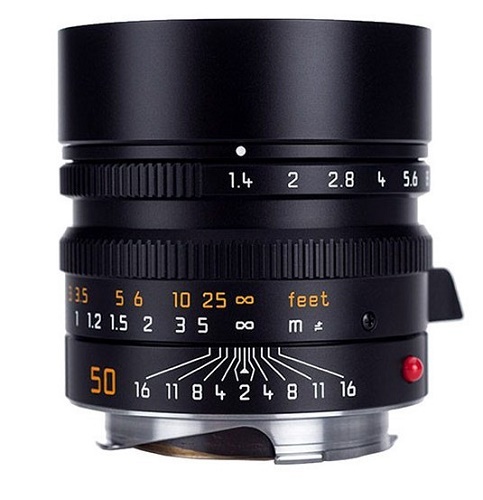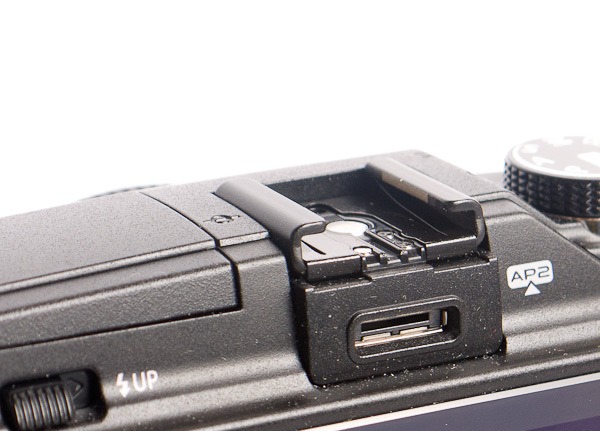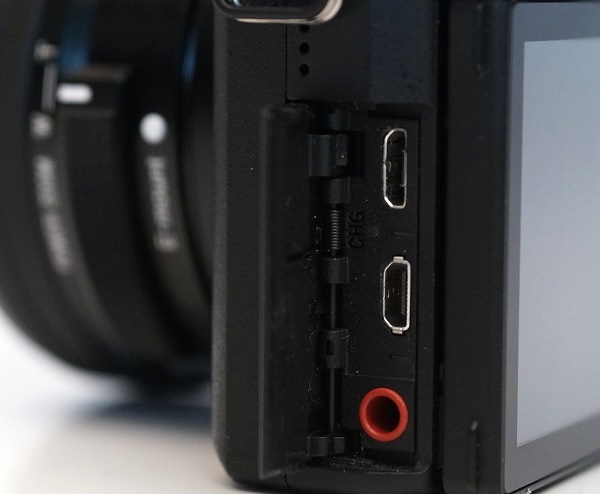Mirrorless camera selection
Today, the market for photographic equipment is ready to provide the user with the broadest selection of equipment for a different taste and wallet. You can find options for the starting level for beginners, more advanced models, as well as equipment for professionals with unique characteristics. Until a certain point, this situation reigned in the DSLR market, but with the advent of a new camera segment, they had a very convenient and efficient successor if not a competitor. So far the mirrorless camera is not capable of replacing a full-fledged reflex camera in absolutely all areas, but in amateur photography it has all the chances.
Content
General characteristics
Mirrorless cameras appeared on the world market relatively recently, in 2008. In theory, this type of technology is not inferior to its more expensive counterparts - SLRs. The main difference is the absence of a block, inside which there is a group of lenses responsible for focusing and transmitting the image: instead, the mirrorless camera has a digital viewfinder.. Most often, a classic digital display plays its role. The viewfinder is located either in a familiar place, so that you can look into it with one eye, or it occupies the entire back side of the device, duplicating images on a full screen.
Due to the fact that the block of mirrors is no longer needed, this type of photographic equipment has significantly decreased in size, approaching the traditional soap dishes. It is worth noting that the quality of the images produced was not affected.
To date, models with mirrorless focusing are produced by all the leading players in the photographic equipment market.

Classification
Conventionally, all mirrorless are divided into several types.
- Starting level, the cost of devices in the range of 20-45 tr. The matrix of such devices is not the highest quality, the resolution level is from 12 to 18 megapixels, the photosensitivity is from 200 to 6400.As a rule, such models do not have a viewfinder, but there is a built-in flash. Included with such models is an inexpensive whale lens.
- Cameras for lovers, price range from 45 to 60 m. The matrix of such devices is much better (crop factor from 1.5). The resolution is high, from 16 to 24 megapixels, and the photosensitivity at the level of 100 is 25600. Such models are equipped with a built-in or external flash and have a wireless communication protocol for fast data transfer. Expensive models have a digital viewfinder. There is a possibility to change the standard whale lens.
- Professional equipment. The price tag for such models starts from 60-65 tr. In the presence of a full-frame matrix with a resolution of up to 36 mp. Sensitivity indicators are at around 50 to 102400 ISO. There is a full-fledged digital viewfinder and a connector for an external flash with hot-shoe support for connecting third-party models. The flash and lens included are rarely supplied.
In most cases, the higher the price, the more opportunities the camera can offer. Nevertheless, the key criterion for choosing an ideal mirrorless is the personal needs of a particular user.

To suit
Most of all mirrorless cameras are interested in those who, for one reason or another, are not satisfied with the quality of pictures of ordinary soap dishes. If a person feels the desire to improve their skills in photo art, he is more likely to acquire the SLR. And for those who just want to better quality without deepening into the theory of frame setting and other technical aspects, mirrorless will work just fine.
Often such equipment is bought and the professionals. Such an apparatus can be useful for a photographer, if only because a SLR camera cannot always be quickly retrieved and adjusted, and a digital gadget is ready with one click of a button. In addition, the dimensions of these two cameras are not comparable.
The main competitors of mirrorless are the advanced soap dishes, which have significantly increased their performance. Part of the competition they make up and SLR start level.
How to start the choice of a mirrorless camera
The first thing you should do before buying is to decide what you plan to shoot: portrait, landscape, sporting events. It is equally important to determine the lighting: natural daylight, poor lighting, indoors.It should be remembered that acquiring a mirrorless, the user becomes the owner of the camera and lens. Mirrorless is a gadget with interchangeable optics.
As a rule, the lens is purchased separately, but there are cases when the camera and the lens are so-called. "Whale", selling together.

Do not forget that the bayonet (the size of the lens mount from different manufacturers) is your own, that is, the lens from Canon is not suitable for the Kodak camera. Lenses are designed to perform various tasks, their cost is very different. For example, a lens with a variable focus distance (“zoom”) is well suited for a suburban trip; a high-aperture lens with a focal length of 50 mm (“portrait”) for portrait photography; 8-24 mm.
For those, about immediately prefers to purchase a universal device, the “cytozum”, most often supplied in the kit, is best suited. This is a lens with a variable focus distance from 15 to 55 mm, having a rather low aperture ratio of f3.5. - f5.7. Due to its versatility and low price, the Kitozum is perfect for those who want to try to work in the new direction of digital photography.
Matrix
Non-specular cameras are equipped with a matrix, a special integrated microcircuit, which, in turn, consists of elements that are sensitive to light (photodiodes). It is thanks to the matrix that the light flux is converted into an electrical signal. According to this scheme, the image is converted to a digital form and recorded on a memory card.
The most important indicators of the matrix are its physical size and resolution level. The first indicator directly shows how many light particles it hits. The more lighting, the better the quality of the picture. The best quality images have full-frame mirrorless cameras. Other matrix types are inferior to this device. There is even a classification of the comparison of a conventional matrix with a full-frame (“crop factor”). The larger the indicator of this factor, the smaller the size of the matched matrix.
Equally important is the resolution. What is more, so more detailed get the image in the photo. Sharper photos with higher resolution take up more space on the memory card. The analogy here is about the same: the higher the resolution, the more expensive the matrix in the manufacture, and, thus,more expensive device itself.
Light sensitivity
ISO is a very important parameter when choosing mirrorless. It directly depends on him picture quality. The higher this figure, the better the picture will look. For high-quality image transfer, it is necessary that this parameter is within 800-1600. If the figures are underestimated, the image may turn out dark and blurry.
Models of the average level have a sensitivity value from 200 to 6400, while professional devices range from 50 to 102400.
The same ISO scores give excellent results depending on which matrix they are applied to. On the budget matrix, even with indicators of 6400 digital noise while the full-frame noise will be an order of magnitude less.
Image stabilizer
Mirror and mirrorless digital cameras in the same order are equipped with a built-in image stabilizer. For DSLRs, this factor is not so important, because due to the greater weight they are more comfortable to hold in their hands. However, in them with a long exposure or poor lighting, the image can get blurry.
Stabilizers are of two types: inside the device and inside the lens. In the first case, if the stabilizer is built into the matrix, the camera will cost much more, but the quality of stabilization will be much higher. There are models with both types of stabilization, but there are less of them on the market. In most cases, the stabilizer in the matrix is quite sufficient.
Flash
There is both built-in and external. In fairness it should be noted that the built-in flash is almost useless when building complex frames. The volume of the captured image is very small, and the quality of the images also suffers. In most cases, it is recommended purchase an external flash.
Most models have a unified connector for quick connection of the “hot shoe” flash.

Viewfinder
Most often it is presented in the form of an eyepiecefollowed by the display. With the help of the viewfinder you can build a frame, as well as work with sharpness and focus. The display shows the main indicators: shutter speed, aperture, exposure compensation, photosensitivity, etc. Using the viewfinder is a matter of taste. If the user is more accustomed to the "eye", then he is unlikely to often resort to his help.
Video shooting
The big advantage of mirrorless is the ability to record video. Here the main requirement is only one point: the ability to record in Full HD format. If working with video is one of the main tasks, then you should pay attention to frame rate. In budget models, this figure is 25-30 frames per second. More advanced models shoot already at 60 frames. There are models that record in the increasingly popular 4K format (high resolution).
Additional interfaces
It is very important not only to make, but also to transfer images to external media in a timely manner without loss of quality. Modern models support the ability to connect directly to the TV. For this gadgets are equipped HDMI connector. To connect to a PC, most cameras have a Micro-USB cable. There are models equipped Wi-Fi module for wireless connection to a computer, but they are much more expensive.

For lovers of video shooting, you should look at the devices with the ability to connect an external additional microphone to record sound in higher quality.
Otherwise, the set of interfaces is standardized and does not vary greatly from different manufacturers.Entry-level models have only a cord for connecting to a PC, more advanced mirrorless ones can have a whole arsenal, everything depends on the price and preferences. Theoretically, if we are talking only about the transfer of information from one carrier to another, then one cord will be enough.
Additional protection
Another performance format is gaining popularity. Quite often, you have to shoot is not in ideal conditions. Sometimes the weather does not fit into the framework of the possibility of operating an unprotected model. Torrential downpour, heat, a fall even from a small height can disable the equipment. It was in order to increase the level of reliability during operation in extreme conditions, manufacturers began to introduce military equipment protection standards (IP67 and 68).
Protected equipment can survive a fall in the dirt, on the ground or even asphalt, it works in the rain and in the desert, even when dust will fall on the body. Of course, a model with such characteristics will cost much more and will not always have the same high performance as its less protected counterparts.
It is quite simple to choose a mirrorless device if you know what it will be used for.The possibilities of this technique are very great, in skillful hands it will not yield to the SLR in almost anything.

/rating_off.png)











